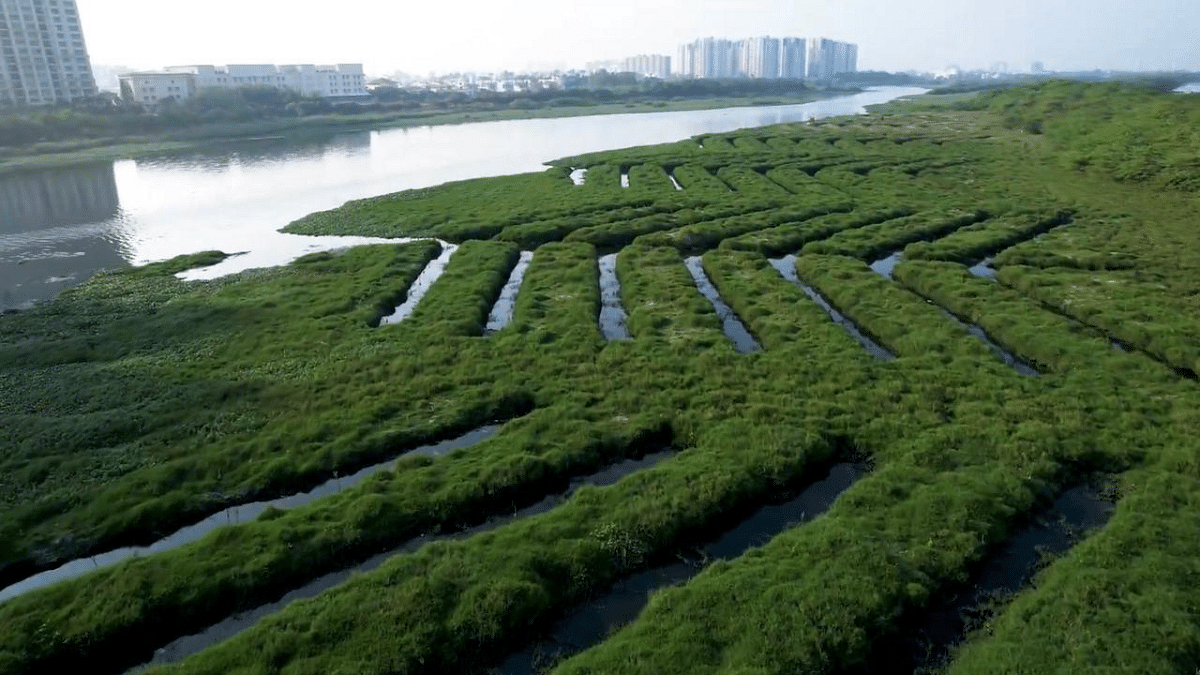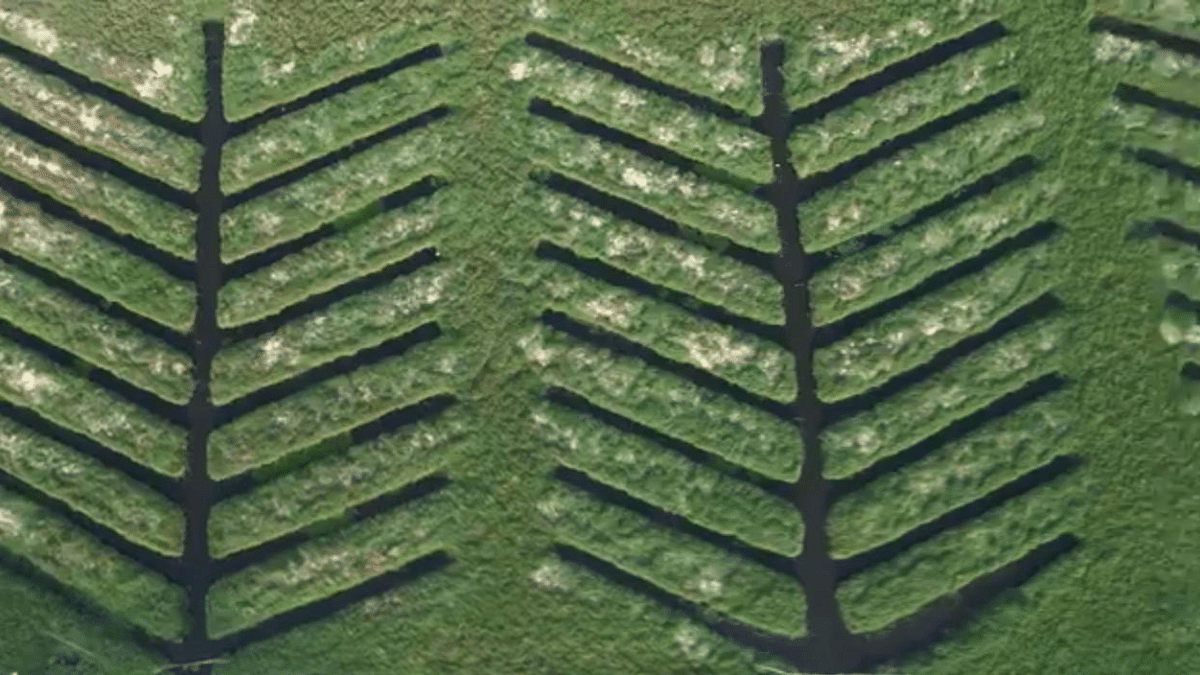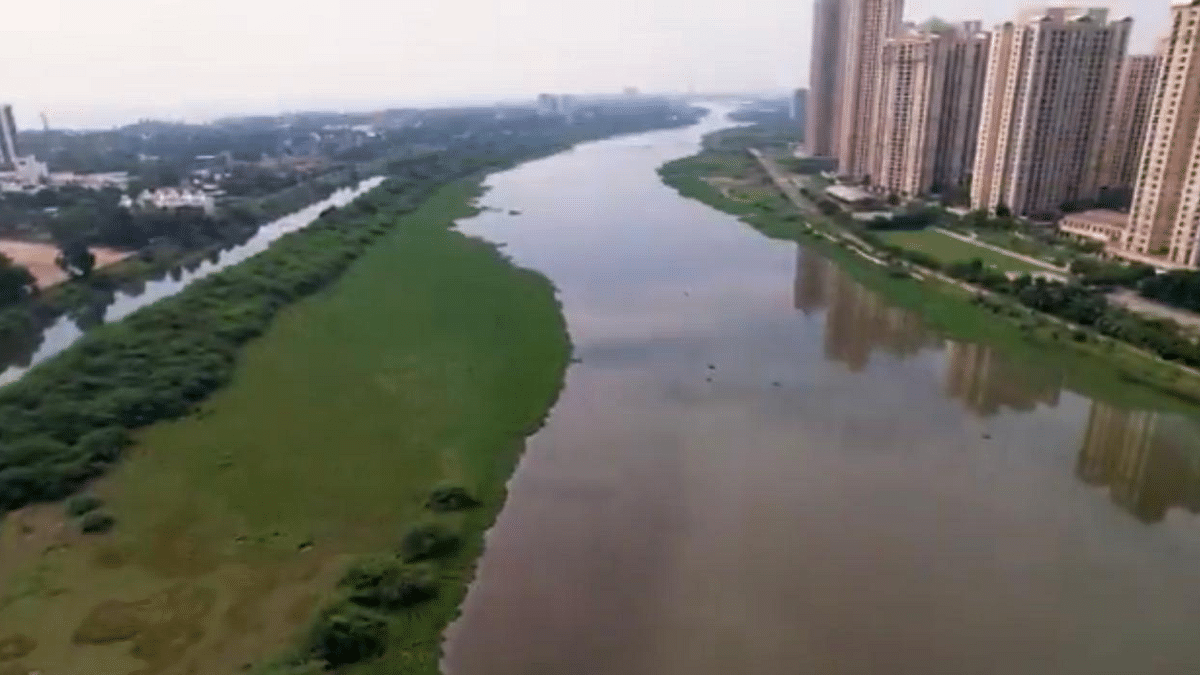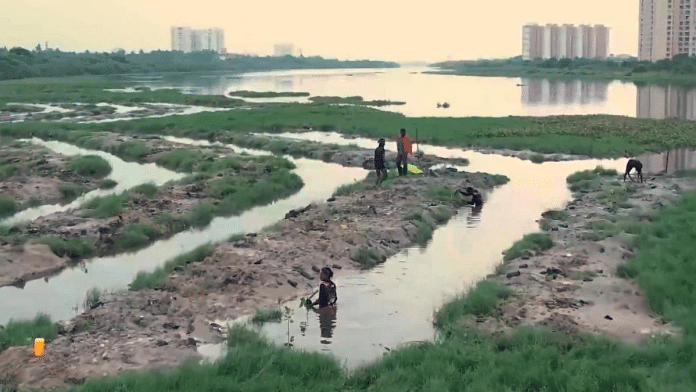Chennai: The sun-soaked coastline of Chennai’s Buckingham Canal, once reduced to a large sewage dump, is becoming home to a sprawling mangrove forest with 12,500 saplings planted last year. It is now on course to add to the state’s green cover.
The saplings were planted under the Chennai Project within the Green Tamil Nadu Mission which aims to rejuvenate degraded forests and increase forest cover in the state.
Supriya Sahu, additional chief secretary (environment climate change & forests), told ThePrint that across Tamil Nadu, “as many as 2,400 hectares are now converted into mangrove forest and about 1,200 hectares of degraded forest have been restored into mangrove forest with the help of locals”.
The mangrove forest project has been completed along the coastlines of Cuddalore, Tiruvarur and Chennai. Of the 2,400 hectares of mangrove forest covered under the Green Tamil Nadu Mission, Chennai Division District Forest Officer V.A. Saravanan said, about 20 hectares are along the stretches of the Buckingham Canal in Chennai.
“And there is potential to plant more saplings along the Buckingham Canal. At least another 200 hectares along the Buckingham Canal could be converted into mangrove forest and proposals have been made for the same,” Saravanan told ThePrint.

Specific to the Buckingham Canal, sources in the state forest department told ThePrint, the move was part of the state government’s efforts to restore the canal which was once a navigational route from Pedda Ganjam in Andhra Pradesh to Marakkanam in Tamil Nadu.
“We don’t know if the full stretch could be restored, but, for now we are focussing on select coastlines,” an official source told ThePrint, adding that these measures could mitigate flooding and might help prevent erosion.
Buckingham Canal, once capable of carrying 5,870 cusecs of water according to the state’s water resources department, saw its capacity reduced to 2,850 cusecs by 2024.
While there were some canal-specific restoration proposals on the cards, the water resources department, which is the custodian of the canal, officially abandoned the restoration project in November 2024 citing lack of funds.

According to a 2022 WRD restoration plan, the water resources department was supposed to invest Rs 980 crore, and the Chennai Rivers Restoration Trust Rs 716 crore.
“If the lack of funds was one of the major reasons to stall the restoration project, removing encroachments and relocating thousands of people from the stretch was another huge task, and was near-impossible. Hence, it was abandoned,” an official at the water resources department told ThePrint.
Saravanan said the initiative to plant mangrove saplings has given a new lease of life to the coastline. “Of the 12,500 saplings planted, over 90 percent are alive now and they have grown nicely. It shows that the place has potential to host more mangrove saplings.”
Also Read: Mangroves are unique, extraordinary and under threat. ‘Floating plantation’ can save them
Fishbone technique & village mangrove committees
Additional Chief Secretary Sahu told ThePrint they first mapped the state’s coastal mangrove cover through the National Centre for Sustainable Coastal Management (NCSCM). “It showed there is a great potential to undertake new plantations in various districts including Tiruvarur, Cuddalore and Chennai.”
The project, which began in the state three years ago, is now helping reduce erosion and flooding during the monsoon when the sea level rises.

The project started along the Buckingham Canal last year. One of the major challenges the forest department faced while planting the saplings there was the inflow of the sewage water.
“Beginning from Muttukadu to Pallikaranai, the canal has seen only sewage water for a long time. One of the major challenges was to clear them and plant the saplings. However, we planned it with the help of the local people and effectively finished the task,” Saravanan told ThePrint.
Sahu underlined how deploying the fishbone technique—creating channels resembling the skeleton of a fish to improve waterflow and support mangrove growth in inundated areas—helped them raise the saplings into trees despite the sewage outflow.

“Using the fishbone technique, we created about 87 channels and 80 distribution canals to improve the waterflow and support the saplings’ growth. It really paid off and more than 90 percent of the saplings survived and grew,” Sahu said.
The Tamil Nadu state forest department has roped in local communities in each region and has set up as many as 48 village mangrove committees across the state.
“We realised that without the involvement of the local people, it is not possible to achieve the desired result. Hence, we set up Village Mangrove Committees, who are basically members of the local community. Then, we gave them training on raising a nursery, planting the saplings and then, we deployed them in the process,” Sahu explained.
(Edited by Ajeet Tiwari)
Also Read: Tamil Nadu is on a mangrove mission to create ‘bio-shields’. Villagers are on the frontlines






